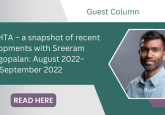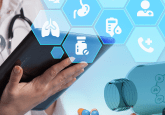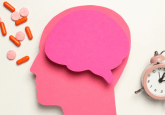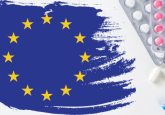Look behind the lecture: futures made of virtual immunity
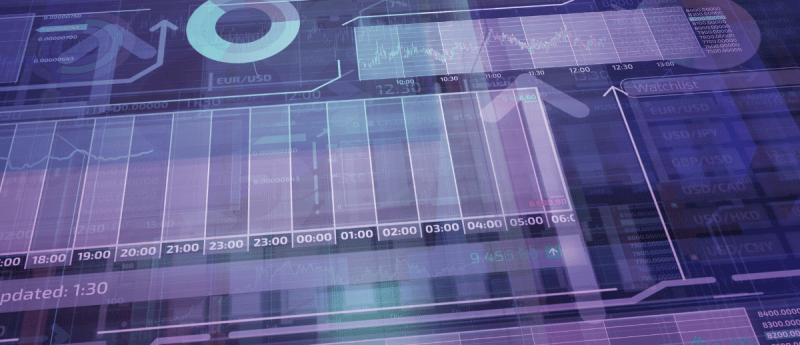
In this feature, following participation in the webinar concerning identification of rare disease patients by using artificial intelligence (AI), machine learning (ML) and electronic health records (EHR), Douglas Drake (Clinerion, Basel, Switzerland) shares his thoughts on the use of digital healthcare technology to benefit understanding on rare diseases, alongside the patients themselves.
Please could you introduce yourself, your organization(s) and provide a brief summary of your career to date?
I am Douglas Drake of Clinerion. I trained in life science research in Germany and the US, and because of my research have developed a strong passion for digital data enablement. Without showing my age, the digital age arrived with pixel cameras, which – much like George Seurat ushering in the age of pointillism – created pixels from binary points. Across life science research and into patient directed care, the common element is the data that enables the understanding of diseases, mechanism of treatment and improving patient care metrics and outcomes. Digital patient data enablement is the capability to fully use and understand digital patient data, so that insights into patient care, the patient journey, and treatment regimens may be generated. At Clinerion we are enabling the digital hospital information system (HIS) within the hospital to be used for the first time for patient care stratification, not just care reimbursement. This is revolutionary and has a direct impact on better patient care and diagnosis.
What are the benefits of having EHR data available in the instance of rare diseases?
Rare diseases are, by definition, rare, but thereby notoriously difficult to diagnose; this is due to their low incidence and the heterogenous nature of the disease phenotypes. Although there are significant advances in understanding the genetic components of rare disease, and new gene therapies are becoming available, diagnosis and access to treatment are still difficult. The advantage of EHR data is that it often represents the complete patient journey through the healthcare system, from seeking treatment, through diagnosis and outcomes. This is especially valuable with regard to rare disease patients that may never have been diagnosed and have not responded to traditional treatments. Their footprints and journey are evident in their EHR and may lead to their correct diagnosis and appropriate treatment by a rare disease tracker and hunter.
Have frameworks been established to guarantee the best use of EHR data?
The “best use” is always a subjective measurement dependent upon perspective, so I prefer to start with current frameworks.
Within Europe, the General Data Protection Regulation (GDPR) is the regulatory framework that dictates patient personal data security and compliance. Further, any patient outreach for any purpose must be part of an ethical committee approval for research by the hospital ethical hearing board and often also nationally regulated and controlled. According to GDPR, absent consent from individual patients, EHR data for research purposes must be deidentified, anonymized and no longer traceable to individual identifiable patients. However, patient outreach for research purposes to identified patients may be approved by a hospital ethical board, which is often nationally regulated. This is a challenge but is possible as part of the Clinerion PNEx network framework whereby anonymized data is queried in situ, within the hospital firewall and never leaves the hospital domain. This ensures data security and privacy. Further, the EU is developing a data sharing recommendation that will provide guidance on personalized medicine, AI, and numerous other digital application areas.
Often a single ontology or data standard is suggested as an ideal by data scientists wishing to have data readily harmonized and standardized. This, like any single language, is not possible, and only likely on a localized basis. Language, semantics and the rules thereunto evolve and change, not uniformly globally.
Another ideal that is suggested is enabling all patients to be in control of their own data. That is also not practical technically and is restrictive to the global good. We need a mechanism to enable sharing and learning to improve healthcare as a whole that is not limited by individual privilege.
What change is still required to ensure that real-world data (RWD) can be continually effective for patients?
The scope of RWD needs to be specific to the application and, therefore fit-for-purpose. RWD encompasses any clinically relevant data outside of clinical trial collection and therefore can come from a variety of sources. There are now increasing sources of RWD as digital technologies expand across the patient engagement experience, from the Internet of Things (IoT) in the smart device on the patient’s wrist, to smart devices in direct or remote care settings, electronic healthcare data, pharmacy claims data and government registry data, and the list is growing. The new challenge is how to integrate these disparate sources so that we can understand the patient journey better. We must track their footprints and guide them out of the rare disease jungle towards the correct diagnosis and treatment.
Do you feel that the COVID-19 pandemic has helped or hindered the use of healthcare technology for rare diseases?
COVID-19 has made digital enablement critical and not just a buzzword. Previously, digital data enablement was a goal, but during the pandemic it became one of the only ways to interact with and manage patients outside a critical care setting. This refocus has now made the use of EHR data a key part of the new digital backbone within healthcare and a key foundation of a “SMART,” or digitally enabled, hospital. I do not believe that this is specific to rare disease patients, but rare disease patients are gaining the benefit of their digital records now becoming available for their own and fellow patient care, alongside research into better diagnosis and treatment.
How do you think obtaining and using EHRs will develop in the next 5–10 years?
Electronic healthcare data, which means the digital patient record of treatment within the healthcare system, is more and more the minimal standard for a SMART hospital infrastructure and care framework. The need, however, is forever more detail, especially biomarker, genomic and medical imaging detail that often requires interpretation. The next few years will see the development of natural language processing capabilities to capture the physician’s diagnostic interpretation, digitally, from their patient notes, as well as AI or ML capabilities to research and model the patient journey and understand the critical steps and timepoints in diagnosis and treatment as well as patient stratification. It is an exciting time to be in digital healthcare and be patient care and outcomes-focused.
Disclaimer:
Douglas Drake is an employee of Clinerion based in Basel. Clinierion works with a number of sponsor companies to help identify and better diagnose rare disease patients within our network and has a partnership with Volv Global, which focuses on applying AI/ML methodologies to identify undiagnosed rare disease patients.
The opinions expressed in this feature are those of the interviewee/author and do not necessarily reflect the views of The Evidence Base® or Future Science Group.



